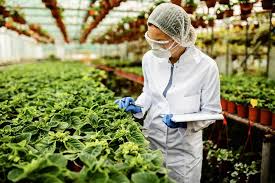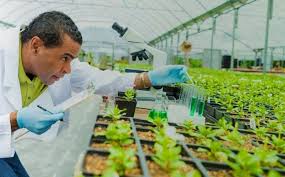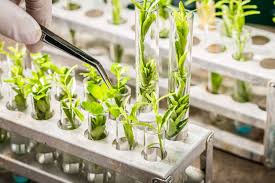Humans have been harnessing biological processes to enhance their quality of life for over 10,000 years, beginning with the first agricultural communities. Approximately 6,000 years ago, humans began utilizing the biological processes of microorganisms to make bread, alcoholic beverages, and cheese, as well as preserve dairy products.
However, these early practices are not what is meant by biotechnology today. The term “biotechnology” first became widely applied to the molecular and cellular technologies that emerged in the 1960s and 1970s.
A burgeoning biotechnology industry began to take shape in the mid- to late 1970s, led by companies like Genentech, a pharmaceutical firm established in 1976 by Robert A. Swanson and Herbert W. Boyer, to commercialize recombinant DNA technology pioneered by Boyer, Paul Berg, and Stanley N. Cohen.
Early biotechnology companies such as Genentech, Amgen, Biogen, Cetus, and Genex focused on manufacturing genetically engineered substances for medical and environmental uses.
For over a decade, the biotechnology industry was dominated by recombinant DNA technology, also known as genetic engineering.
This technique involves splicing a gene for a useful protein (often a human protein) into production cells such as yeast, bacteria, or mammalian cells in culture which then begin producing the protein in large quantities. In the process of splicing a gene into a production cell, a new organism is created.
Initially, there was uncertainty about whether patents could be acquired for these new organisms, as patents were typically not granted for newly discovered organisms in nature. However, in 1980, the U.S. Supreme Court, in the case of Diamond v. Chakrabarty, ruled that “a live human-made microorganism is patentable subject matter.”
This decision led to a wave of new biotechnology firms and a significant investment boom for the infant industry. In 1982, recombinant insulin became the first genetically engineered product to gain approval from the U.S. Food and Drug Administration (FDA).
Since then, numerous genetically engineered protein medications have been commercialized worldwide, including recombinant versions of growth hormones, clotting factors, proteins to stimulate the production of red and white blood cells, interferons, and clot-dissolving agents.
Read Also: Amazon Flowers: All You Need To Know About
1. What is Biotechnology?

Biotechnology involves the use of biological systems found in organisms or the use of the organisms themselves to make technological advancements and adapt these technologies to various fields.
These include applications in agriculture, medicine, and many other sectors. Biotechnology encompasses not only the use of living organisms but also any field where information obtained from biological aspects of organisms can be applied.
Biotechnology is technology based on biology it harnesses cellular and biomolecular processes to develop technologies and products that improve our lives and the health of our planet. Humans have used the biological processes of microorganisms for over 6,000 years to make useful food products like bread and cheese, as well as to preserve dairy products.”
Biotechnology has applications in nutrient supplementation, biotic stress resistance, industrial processes, production of strong fibers, biofuels, and healthcare.
2. Recombinant DNA Technology in Agricultural Biotechnology
Recombinant DNA technology refers to the process of combining DNA molecules from two different species and inserting them into a host organism to produce new genetic combinations that benefit science, medicine, agriculture, and industry. The fundamental goal of laboratory geneticists is to isolate, characterize, and manipulate genes.
While isolating a sample of DNA from a collection of cells is relatively easy, finding a specific gene within that DNA sample is akin to finding a needle in a haystack. Each human cell contains approximately 2 meters (6 feet) of DNA, meaning a small tissue sample contains many kilometers of DNA.
However, recombinant DNA technology enables scientists to isolate a single gene or any other segment of DNA, allowing them to determine its nucleotide sequence, study its transcripts, mutate it in precise ways, and reinsert the modified sequence into a living organism.
Read Also: Pumpkin Flowers (Pumpkin Blossoms): Complete Growing and Care Guide
3. Genetic Engineering in Agricultural Biotechnology

Genetic engineering involves the artificial manipulation, modification, and recombination of DNA or other nucleic acid molecules to modify an organism or population of organisms.
Originally, the term genetic engineering referred to various techniques for modifying or manipulating organisms through heredity and reproduction.
This included artificial selection and biomedical techniques like artificial insemination, in vitro fertilization (e.g., “test-tube babies”), cloning, and gene manipulation.
However, by the latter part of the 20th century, the term began to refer more specifically to recombinant DNA technology (or gene cloning), where DNA molecules from two or more sources are combined, either within cells or in vitro, and inserted into host organisms, where they can propagate.
4. Benefits of Agricultural Biotechnology
Decades of documented evidence demonstrate that agricultural biotechnology is a safe and beneficial technology that contributes to both environmental and economic sustainability.
Farmers choose biotech crops and animals because they increase yield and reduce production costs. Agricultural biotechnology, genetic engineering, and recombinant DNA technology allow farmers to achieve greater financial returns while practicing environmentally friendly farming methods.
Do you have any questions, suggestions, or contributions? If so, please feel free to use the comment box below to share your thoughts. We also encourage you to kindly share this information with others who might benefit from it. Since we can’t reach everyone at once, we truly appreciate your help in spreading the word. Thank you so much for your support and for sharing!

